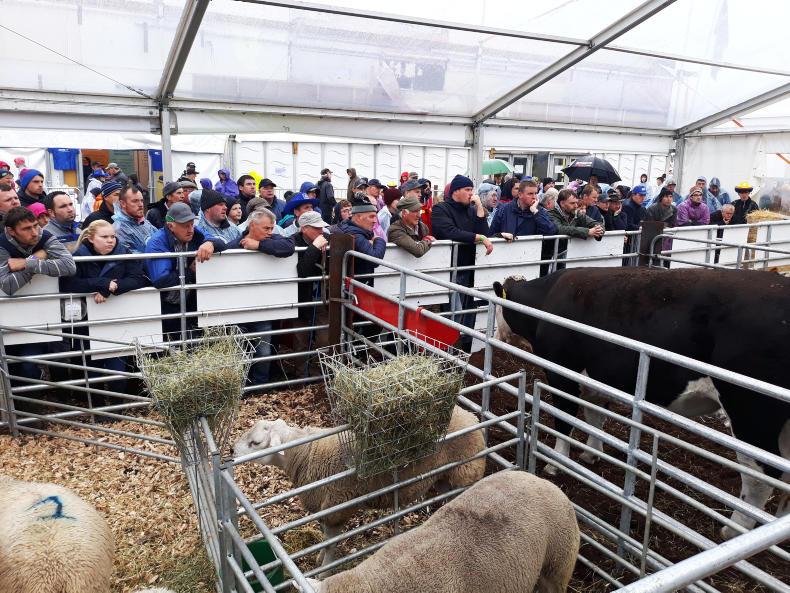Straw supplies are tight again this year, driven by crop growth being stifled by drought and higher demand for straw for feeding.
Where straw is available, a higher cost is also proving to be a barrier, with farmers potentially limited in the volumes they can justify purchasing.
Straw supplies
One of the topics at the Let's Talk Farming demo at the National Ploughing Championships, held in conjunction with Bord Bia and the ICBF, focused on straw supplies and putting plans in place to deal with lower volumes.
While costly, when it comes to lambing management, skimping on straw supplies is a false economy when you consider the knock-on effects of disease getting established.
There are some alternative bedding options that can be utilised, but many of these also depend on your location and access to them, with transport costs ruling them out if hauling long distances.
Common bedding options
The demo looked at the three most common bedding options – straw, peat and woodchip.
Analysis presented by Peter Varley of the Irish Farmers Journal shows that, on a cost basis, if straw is €30/bale, peat bedding will come in at approximately 50% lower, with woodchip costing about 80% of straw.
This was carried out on bedding an area of 4.57m square pen for weanlings for six weeks. Straw will cost €112 for the period, peat bedding €60 and woodchip €87. This was taken in the context of bedding cattle.
Lack on information
The option of peat and woodchip bedding have not been widely used in Ireland before now for sheep and, as such, there is a lack of information about their advantages and disadvantages.
Some are more widely used in the UK and EBLEX has developed a bedding materials directory that is a useful guide for those looking to find some more in depth information. It can be found at https://beefandlamb.ahdb.org.uk/wp-content/uploads/2013/06/bedding_materials_directory_2011_low_res131011.pdf.
Existing supplies
Before progressing down the route of assessing peat and woodchip, it is worth assessing existing straw supplies.
In general, a lowland ewe will require 7kg straw bedding per week to absorb all urine, while hill ewes require about 4kg to 5kg straw.
As a general rule of thumb, a 4x4 round bale of dry straw weighing 140kg will be sufficient to bed about 18 to 20 lowland ewes or 30 to 35 hills ewes for one week on a silage-based diet.
This requirement may reduce 20% to 30% for ewes fed hay or haylage.
While alternatives or outwintering ewes may stretch existing straw supplies, it is important to have a sufficient supply of straw for lambing pens. Teagasc advises that approximately four to five round bales will be needed per 100 ewes.
Woodchip
Woodchip has been shown to be a useful alternative, which offers animal health and welfare benefits.
It is also described as offering a good free-draining bedding material, provided the woodchip is less than 30% moisture content and preferably if it has a moisture content of about 20%.
Timber used must be untreated, as treated timber is not permitted for bedding due to the risk to animal health.
It is advised to use an initial 10cm-deep bed, with a fresh topup layer used as required.
As is the case with any bedding material, the diet offered will have an effect on the length of time bedding remains dry and the duration between topup being required.
The downside to woodchip is its disposal, as it takes a long time to break down. Therefore, spent material will need to be composted, adhering to nitrates storage regulations, or ploughed down. Woodchip is currently quoted at €20 to €25/m3.
Sawdust/wood shavings
The guide lists sawdust as a comfortable, clean bedding material, provided it is managed carefully and preferably where it has been screened and dried.
It highlights that it can be particularly useful as a bedding material for ewes and lambs in individual pens.
Again, sawdust from treated timber is not permitted to be used, while damp sawdust should be avoided due to its risk of harbouring spores.
The guide also raises anecdotal reports linking the use of wet sawdust with increased cases of footrot.
The recommended approach is to use an initial 30cm- to 60cm-deep bed. Drainage is described as deteriorating over time and, therefore, the advice is to replace every four to eight weeks.
One possible option listed is using sawdust in combination with straw to prolong its use and stretch existing supplies.
Peat bedding
Peat bedding has been used in greater frequency on cattle farms last winter. The best results are achieved where a deep bed is initially applied, with its lifetime prolonged where the bedding material can be mixed to bring more absorbent material to the surface.
Where used in a suckler or dairy situation, it is best used to bed animals up to calving, with straw then used to calve animals.
A similar approach is best advised with ewes lambing.
Again, location is likely to be the biggest factor in using peat with transport costs a big factor. Current costs range from €13/m3 collected to upwards of €20/m3 delivered depending on the distance.






 This is a subscriber-only article
This is a subscriber-only article










SHARING OPTIONS: